Key Takeaways
- Dogs’ needs for exercise vary widely. While there are always exceptions, some breeds are known to be lazier and more low-key than others.
- While all dogs need some daily exercise, many are content with a couple of short walks and some playtime, with long naps on the couch in between.
- Dogs with lower exercise needs include bulldogs, basset hounds, and mastiffs.
- Pet parents seeking a mellower dog should also consider senior dogs from rescues or shelters.
Table of Contents
You may be the kind of pet parent who prefers to snuggle up with your furry friend on the couch rather than go for a brisk walk. Or you live in a small apartment without great walking options nearby. Perhaps you have a disability that makes walking a dog more challenging. People with young children may want a pet that is not too boisterous and would make a gentle playmate.
While all able-bodied dogs need walks for exercise and the stimulation that being outdoors provides, some require much less exercise than others. These couch potato breeds prefer lounging over long-distance running.
In addition to breeds, people looking for low-energy dogs should consider adopting a senior pet from a shelter or rescue. Pet-seekers often overlook senior dogs even though they make loving, mellow pets.

1. Basset Hound
Basset hounds are known for their long, droopy ears, agreeable temperament, and loud bark. Their short legs and long bodies make them unsuitable for high-energy activities and perfect couch potatoes. However, people bred basset hounds to hunt rabbits and other small game, so they will still enjoy being out in nature, where they can run, play, and put their prey instincts to work. Just pay attention to when they show signs of fatigue and are ready to return to a comfy bed.
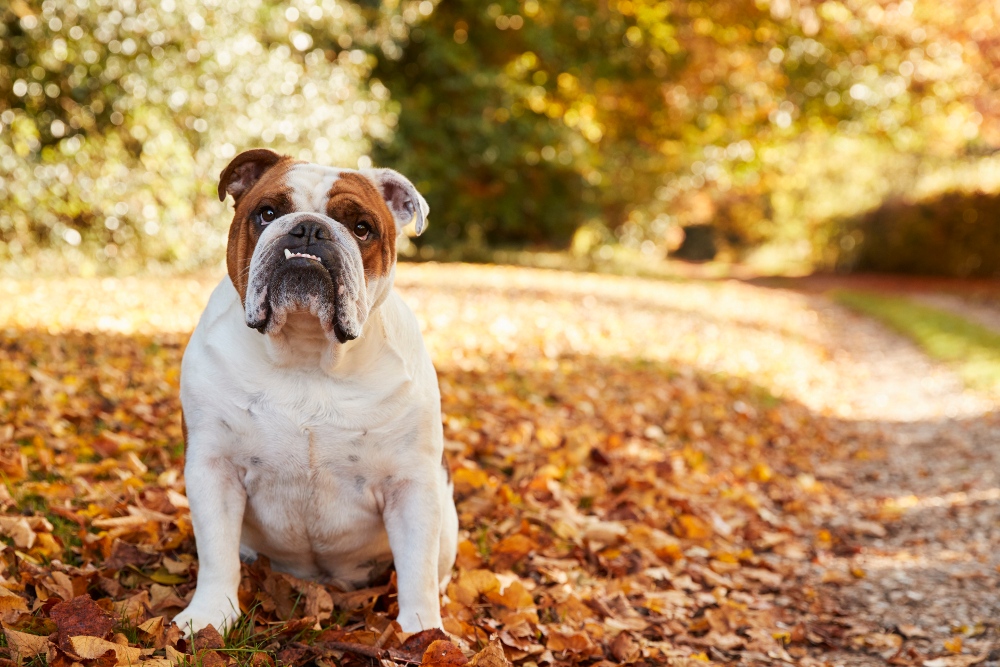
2. Bulldog
Whether English or American, bulldogs are the epitome of a laid-back pet. With their “smushed” noses, they enjoy short walks but are happiest when snoozing by their owner’s side. That doesn’t mean bulldogs don’t have athletic ability. An English bulldog named Tillman became world famous for his skateboarding and surfing skills, with his low center of gravity giving him an edge. Many bulldogs do fine on hikes too, as long as it’s not too hot or far.
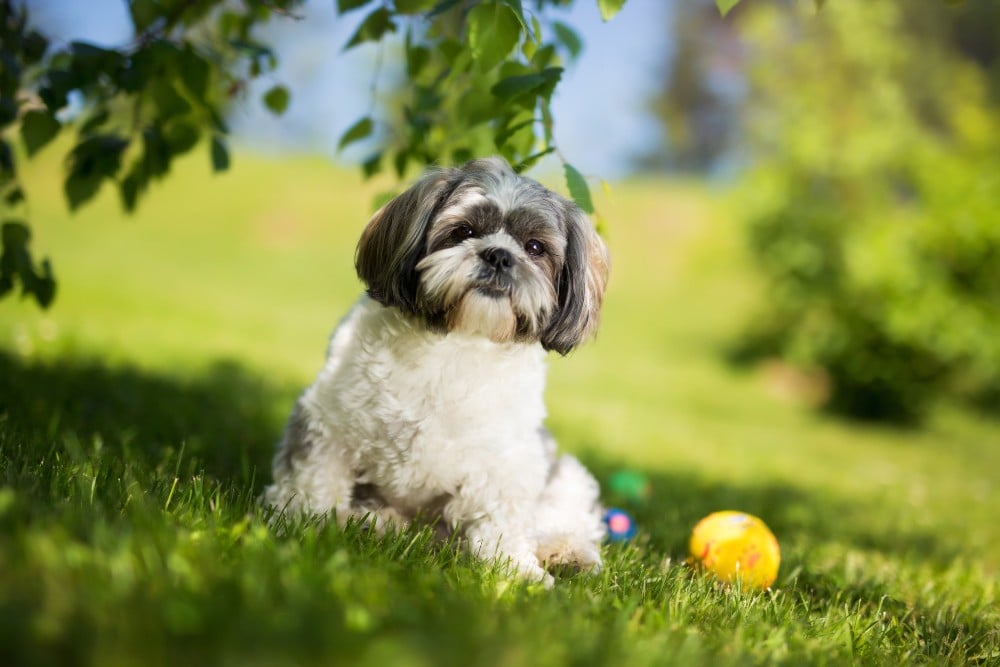
3. Shih Tzu
A toy breed originally bred as a companion dog for Chinese royalty, Shih Tzus are happy to live a life of luxury and relaxation. At somewhere between nine and 16 pounds, they require minimal exercise and are content with indoor play. While beloved as lapdogs, they are not without dexterity. These outgoing dogs do well at agility competitions.
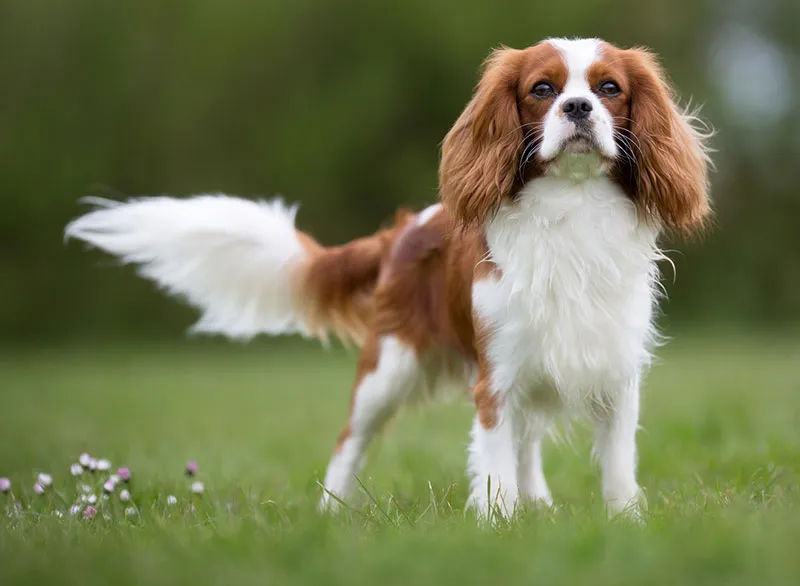
4. Cavalier King Charles Spaniel
The cavalier King Charles spaniel is known for its calm disposition and adaptability. They make excellent family companions and love spending their days indoors with lots of cuddles and playtime. They enjoy a cozy lap but will match their energy level to their pet parent’s activity. They can be active and successful as hunting dogs.
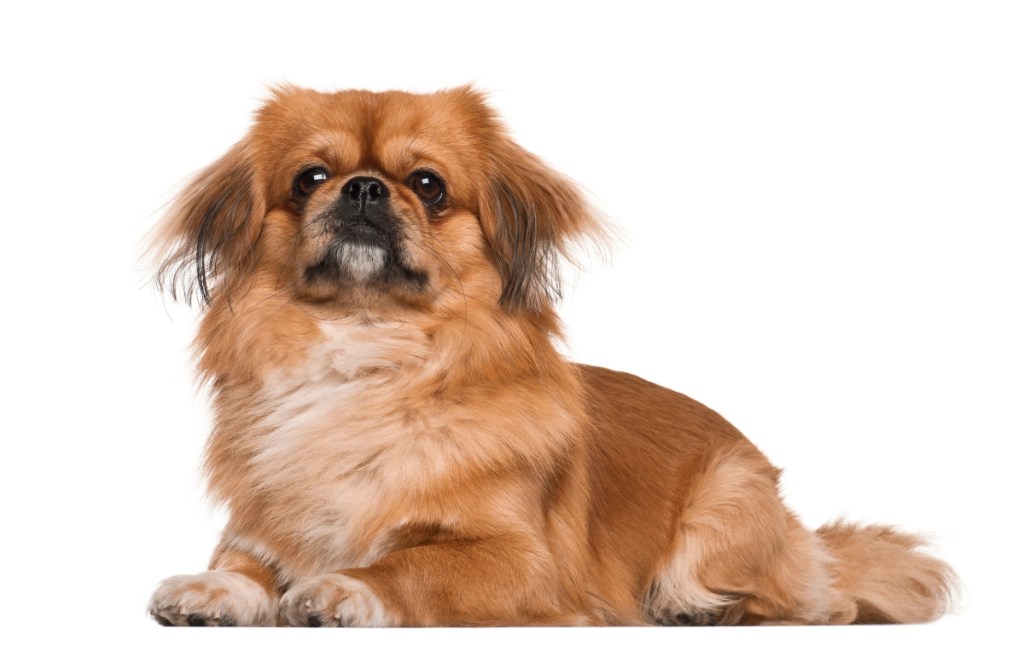
5. Pekingese
Another breed developed as a companion for Chinese royalty, Pekingese dogs are low-energy and prefer lazing around to exercising. They enjoy short walks and playtime. At only about 14 pounds, they fit nicely on laps and in small homes or apartments. They are loyal to their humans but can be territorial, making them decent watchdogs.
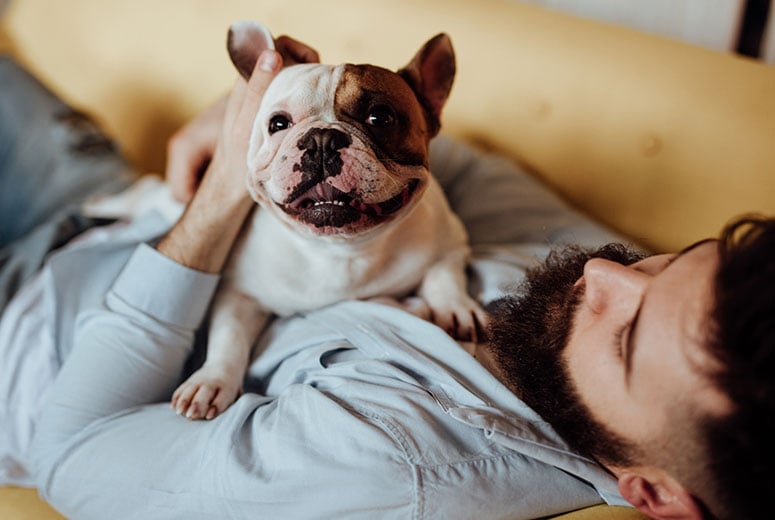
6. French Bulldog
One of the most popular dogs in the U.S., French bulldogs make ideal companions for city dwellers with their compact size and easy-going nature. They are playful and enjoy short walks, but their stout build and “smushed” noses mean they get tired quickly, and you should avoid walking them during hot weather.
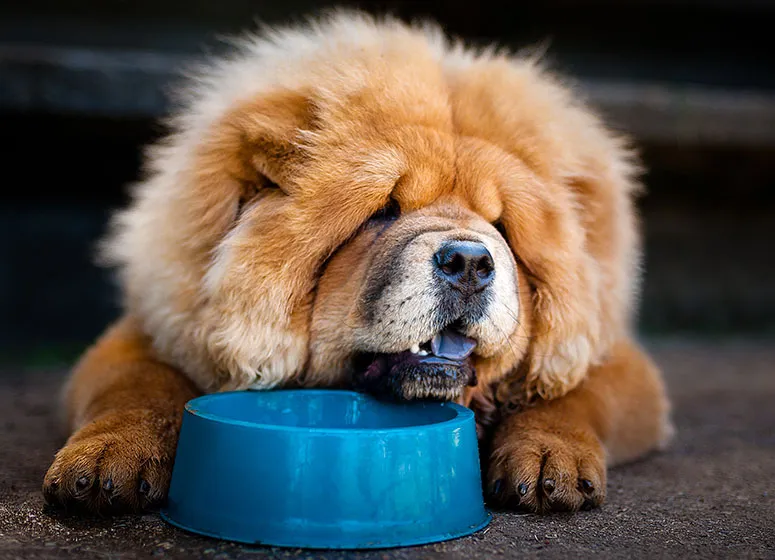
7. Chow Chow
Chow chows are an ancient breed resembling a lion and were initially bred for guarding, hunting, and pulling carts. Despite this, chow chows are not high-energy dogs and prefer lounging to playing. Known for strong personalities and aloofness with strangers, they will be fine with two short daily walks.
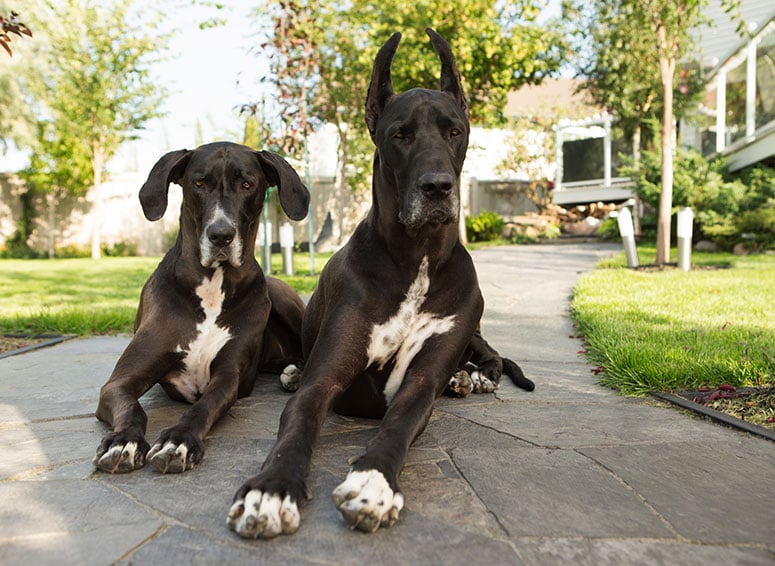
8. Great Dane
Despite their enormous size, Great Danes are gentle giants with a moderate energy level. They will enjoy two to three brisk walks a day, and can hike, but are equally happy to relax at home. Because of their size (up to 170 lbs.!), they would do well in a house with a large backyard where they can play.
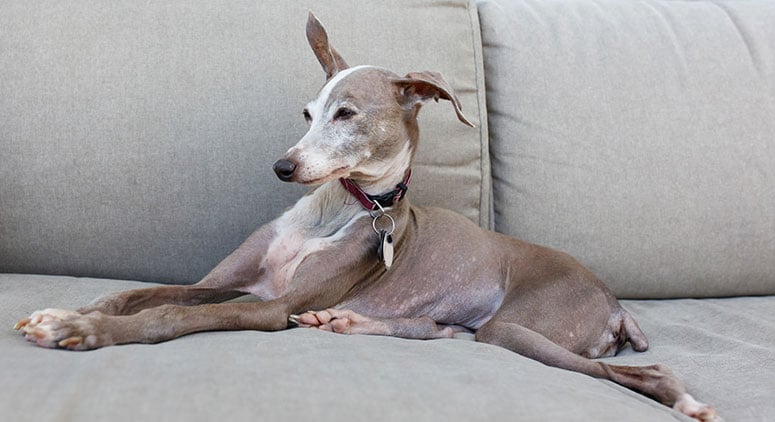
9. Italian Greyhound
These small, slender dogs might look like they’re built for speed, but Italian greyhounds prefer the comfort of indoors. Ideal little lapdogs, they are charming and love to be around people. That doesn’t mean they can’t be athletic when they want to be – they excel at agility training. Their lack of fat and short fur means they are sensitive to cold and enjoy cuddling under blankets.
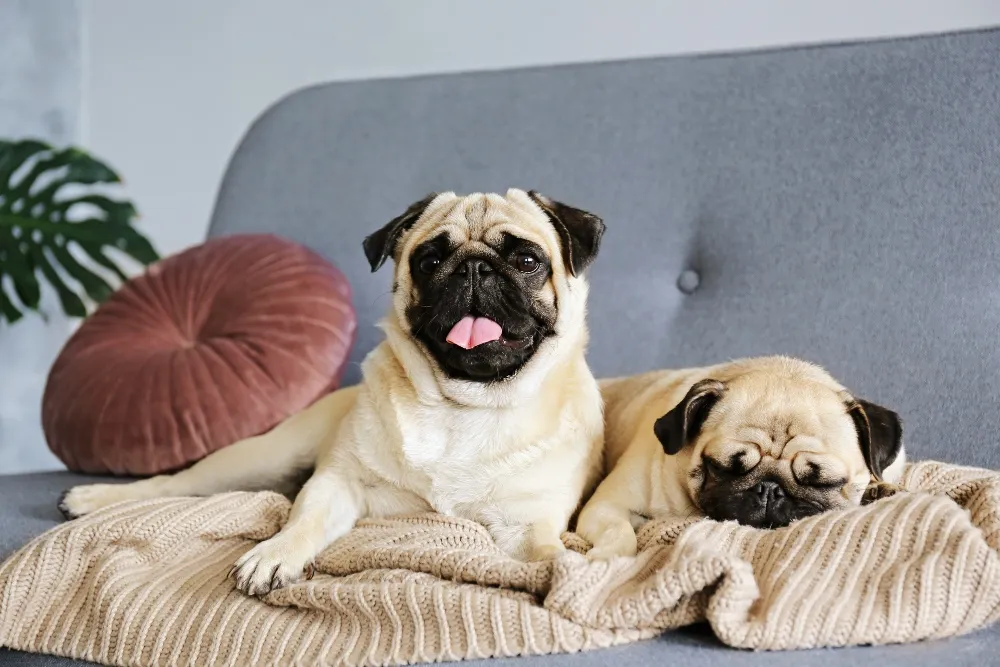
10. Pug
Pugs come in a compact package, are playful and friendly, and make excellent family dogs, as they love to be around people. They are mostly content with short, moderately-paced walks and plenty of nap time. Their small size makes them suited for apartment living.

11. Mastiff
Mastiffs are powerful, large-breed dogs initially designed for fighting but have evolved into kind and lovable family pets. They would do fine with two walks daily when it’s cool outside. Because of their large size (up to 200 lbs.), they don’t do well in apartments or small spaces, and a yard to play in would be ideal.
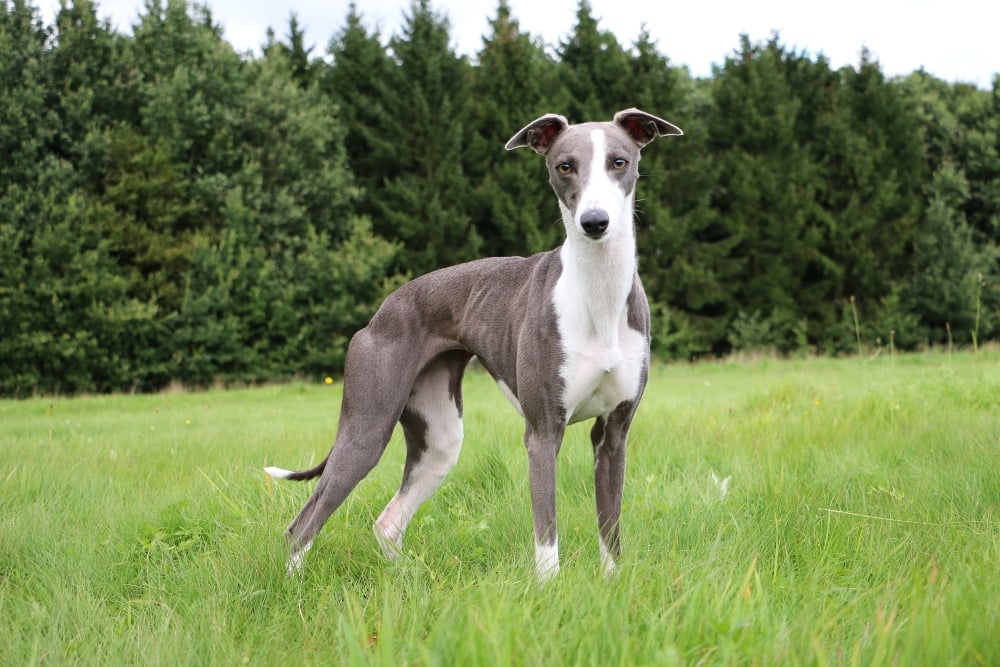
12. Whippet
Similar to the Italian greyhound, whippets are quick and agile but tend to burn out quickly while exercising. They love walking and stretching their legs and running in a safely enclosed area, but then are content to spend the rest of their day hanging out with their people. Their athleticism means they can excel at agility training or active games.
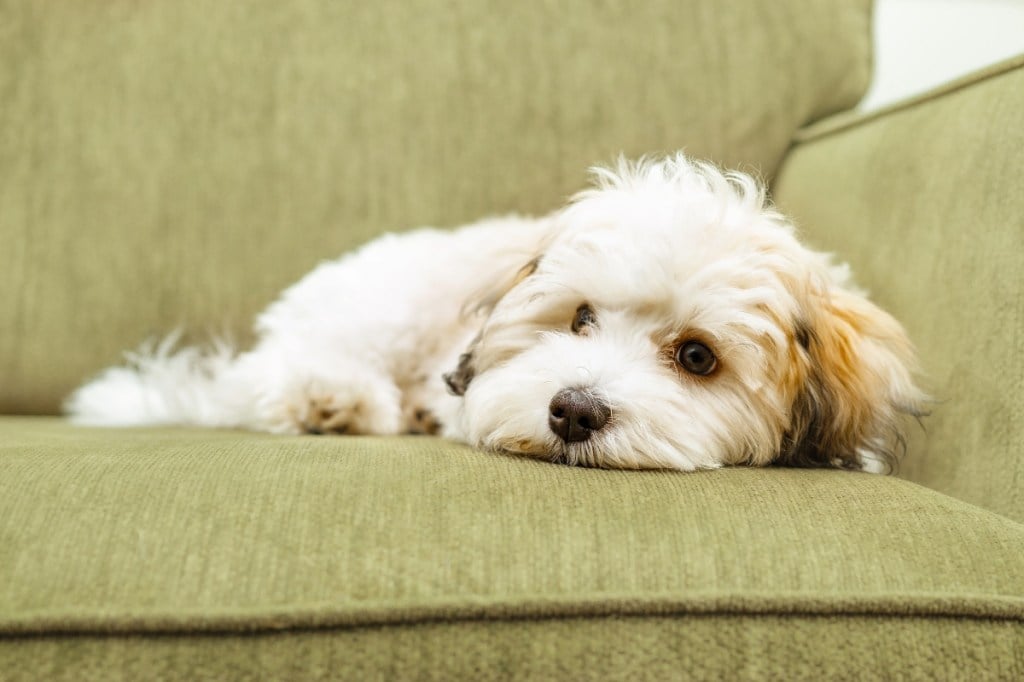
13. Havanese
With their beautiful coat and playful personalities, this small breed loves attention and is easy to train but doesn’t require constant activity. Havanese are happy with short play sessions or a walk around the block. They also enjoy looking out the window from a comfy couch.
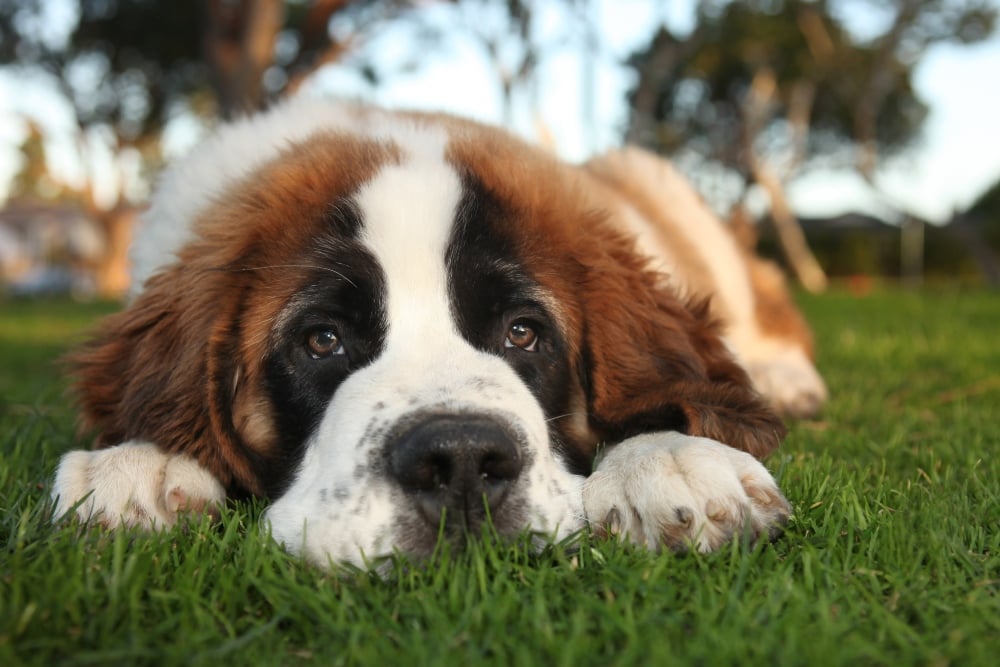
14. Saint Bernard
Known as gentle giants, Saint Bernards are calm and patient. Despite being in the working dog group and becoming famous for rescuing people in the snow in the Swiss Alps, they require minimal exercise. A daily walk or playtime in a yard should suffice. However, they are prone to weight gain, so regular activity is essential. They don’t do well in the heat, so exercise them during the cooler parts of the day.
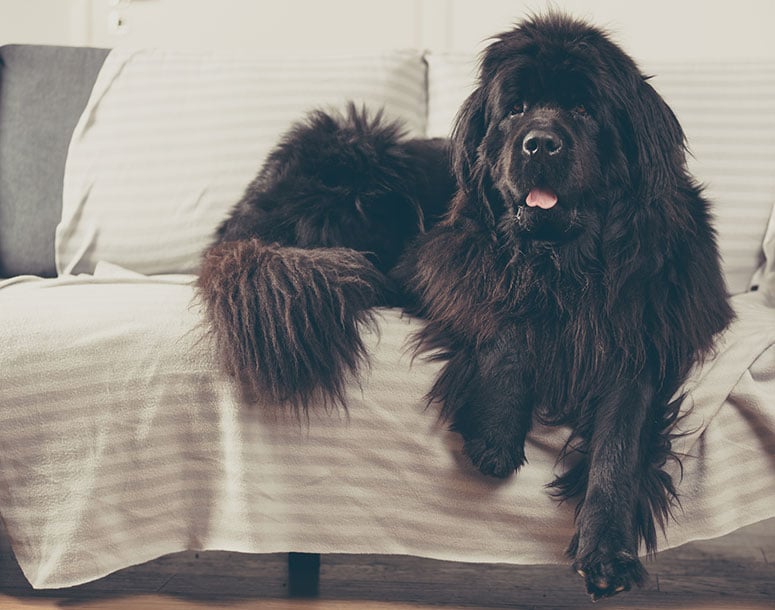
15. Newfoundland
Among the largest breeds, Newfoundlands are gentle, loyal companions who are superb with children. While they were originally bred to help fishermen because of their strong swimming skills, their exercise needs are modest. They require some exercise to maintain a healthy weight and cardiovascular system but prefer a leisurely walk to a run. If you live near a healthy body of water, you can exercise your Newfy by letting them swim to their heart’s content.
Conclusion
Each of these breeds has a unique personality and set of needs, but all share one common trait: they thrive in a calm environment. When considering adopting any pet, remember that individual personalities and energy levels vary. Even within low-energy breeds, you might find a spirited Frenchie who wants to hike all day. Similarly, individual dogs whose breed is typically high-energy can be lazy loungers.
While low-energy dog breeds are often more chill and less physically demanding, remember that “low-energy” doesn’t mean low maintenance. These breeds still require regular care, including walks, proper nutrition, regular veterinary check-ups, and mental stimulation. Many are prone to congenital or hereditary medical conditions, so be sure to sign up for pet insurance while they are young.
For further reading and to ensure the best match for your lifestyle, the American Kennel Club (AKC) provides detailed information on various dog breeds and their care requirements.







